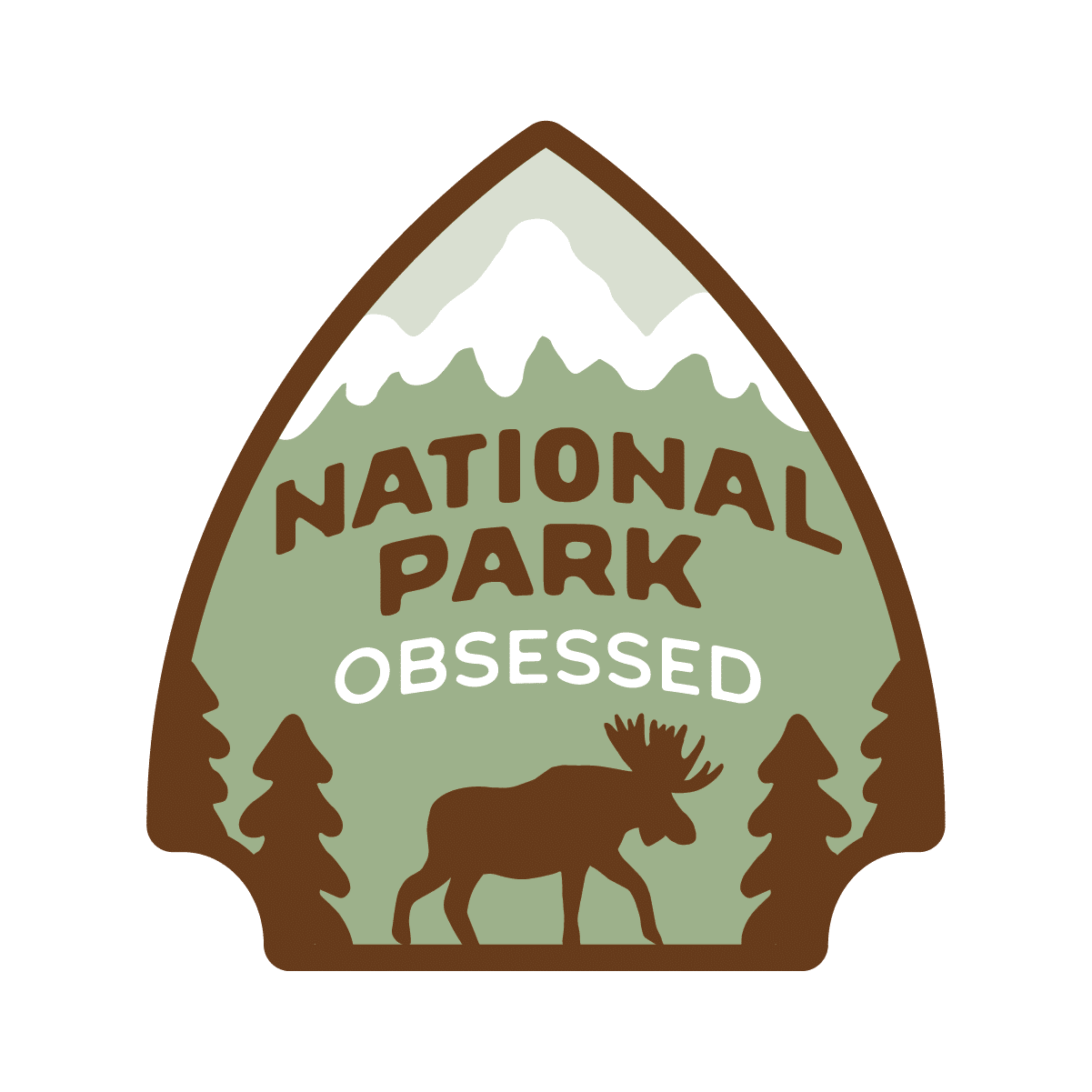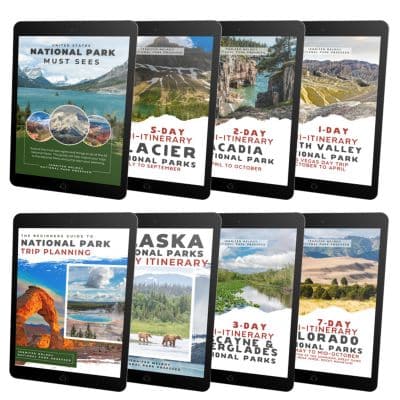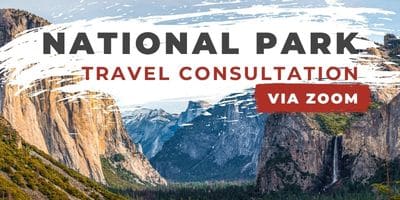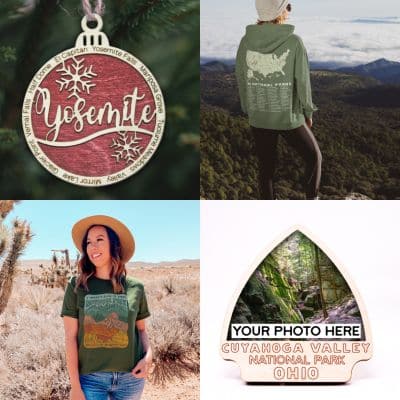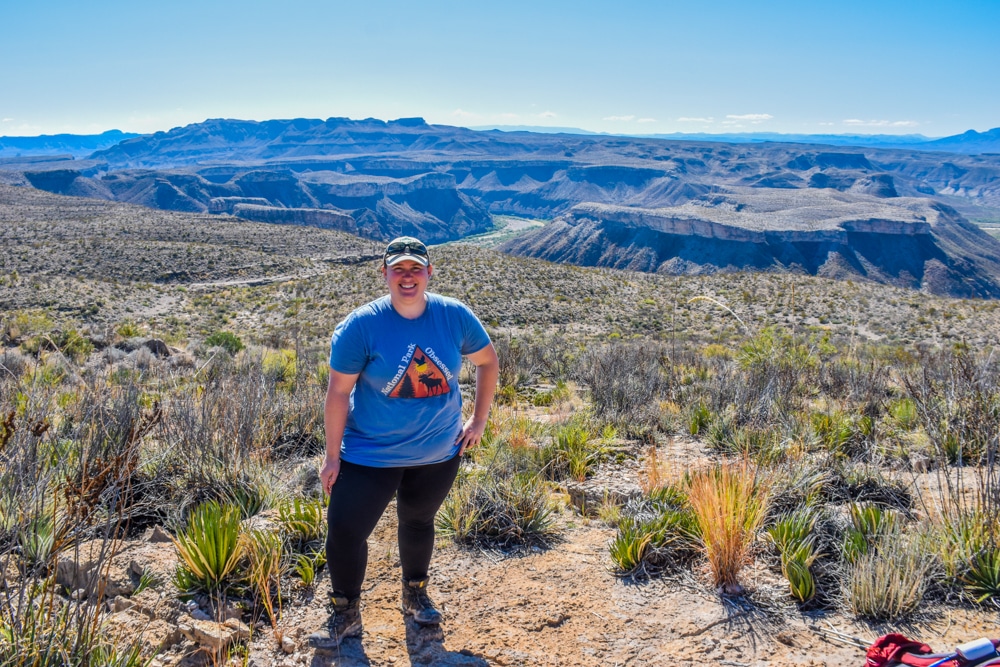
The Ultimate National Park Essentials Guide
- Jennifer Melroy
- Last Modified February 5, 2021
- First Published on January 5, 2020
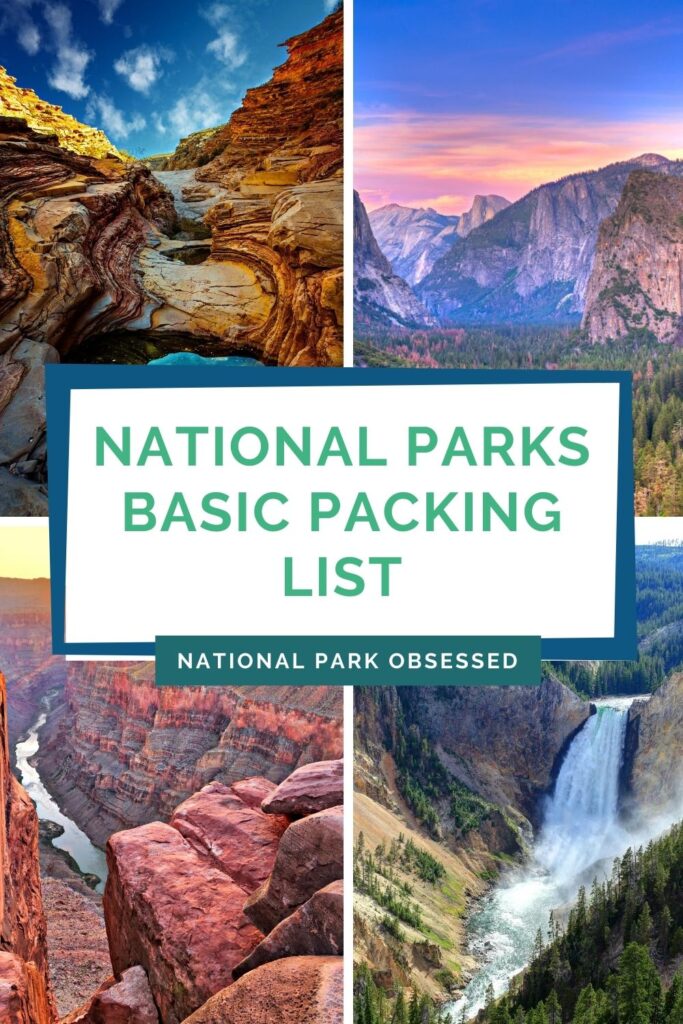
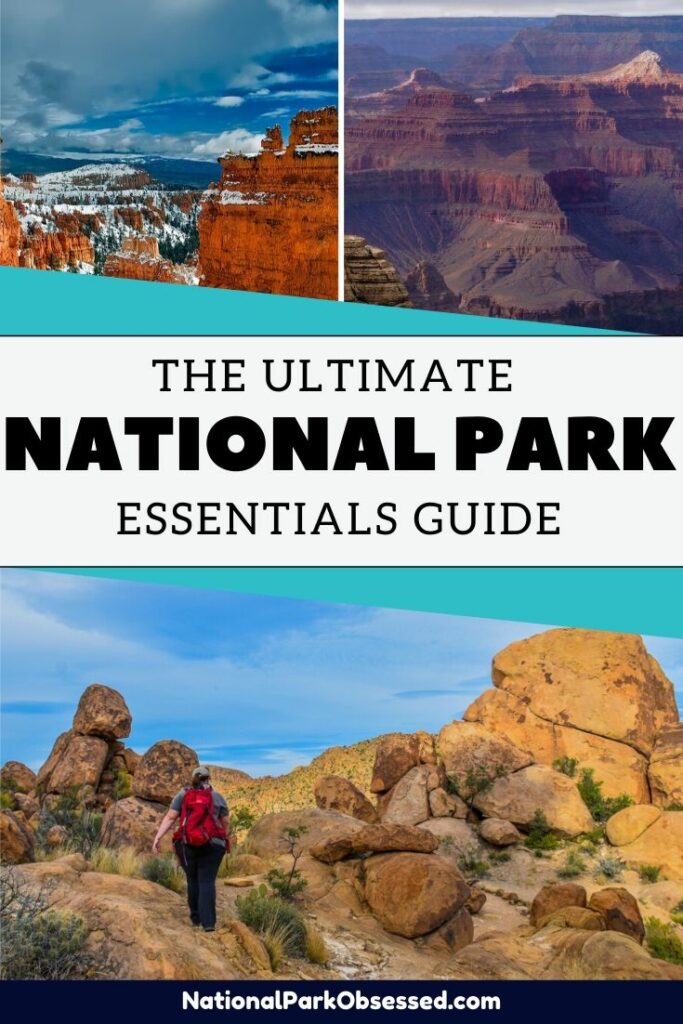
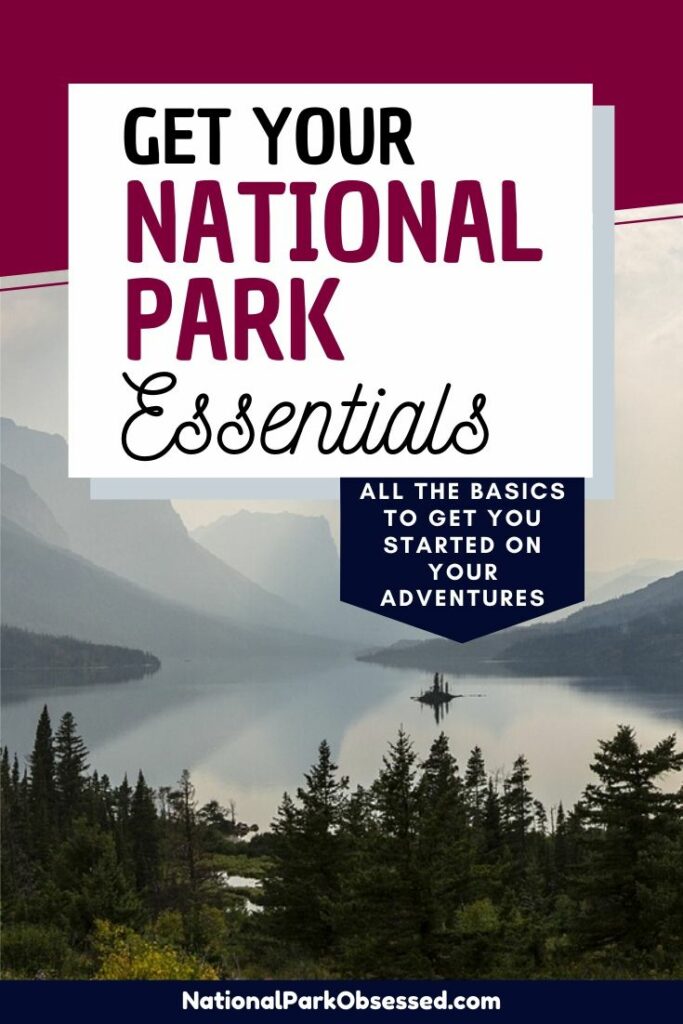
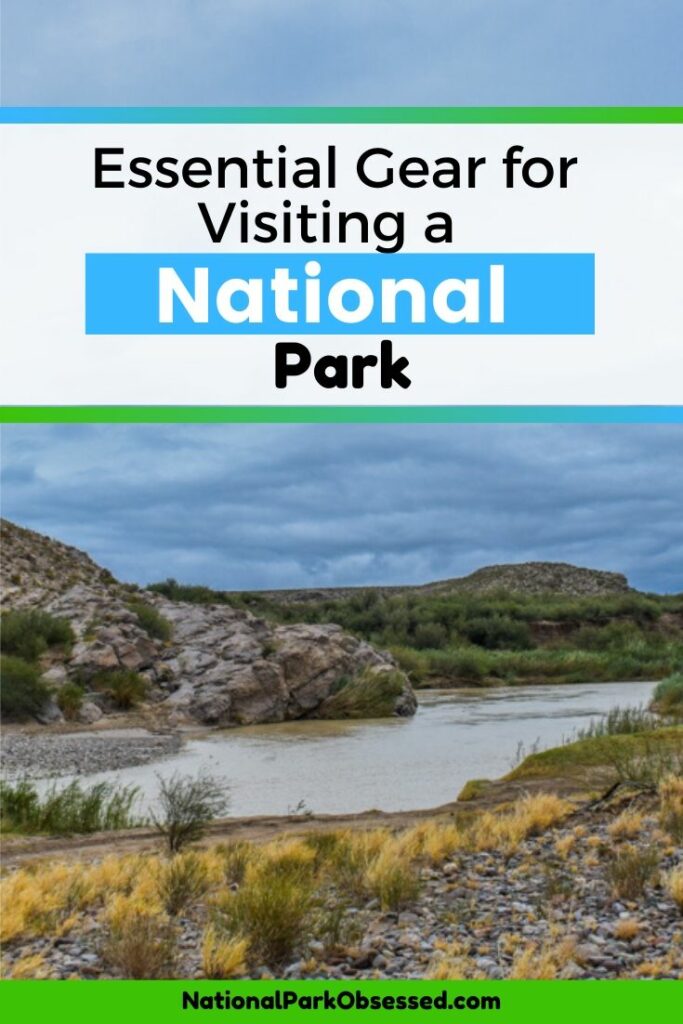
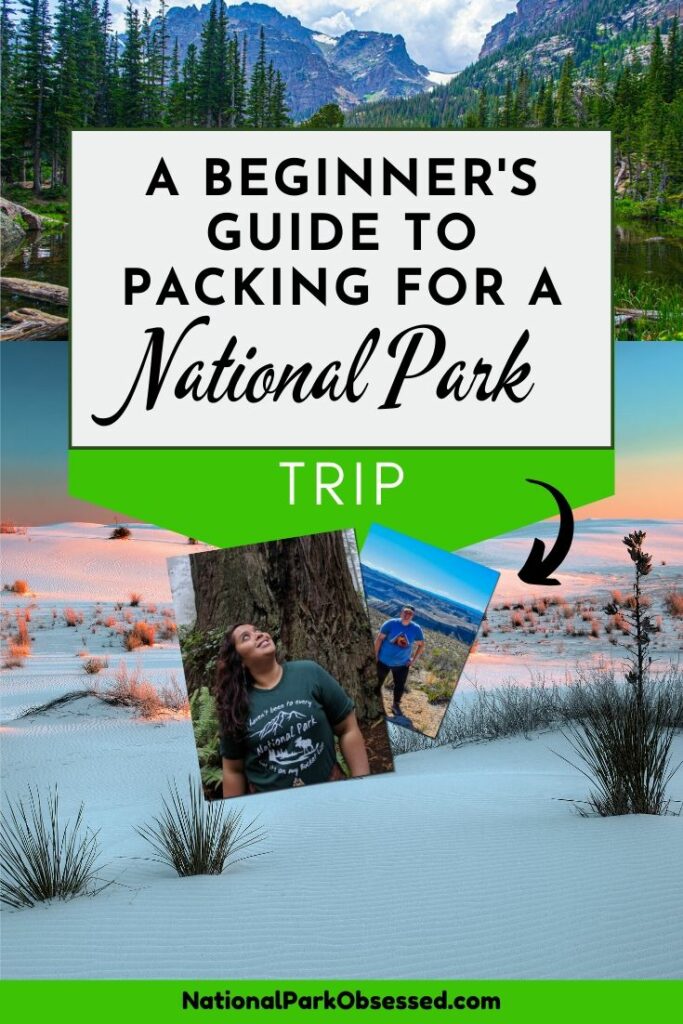
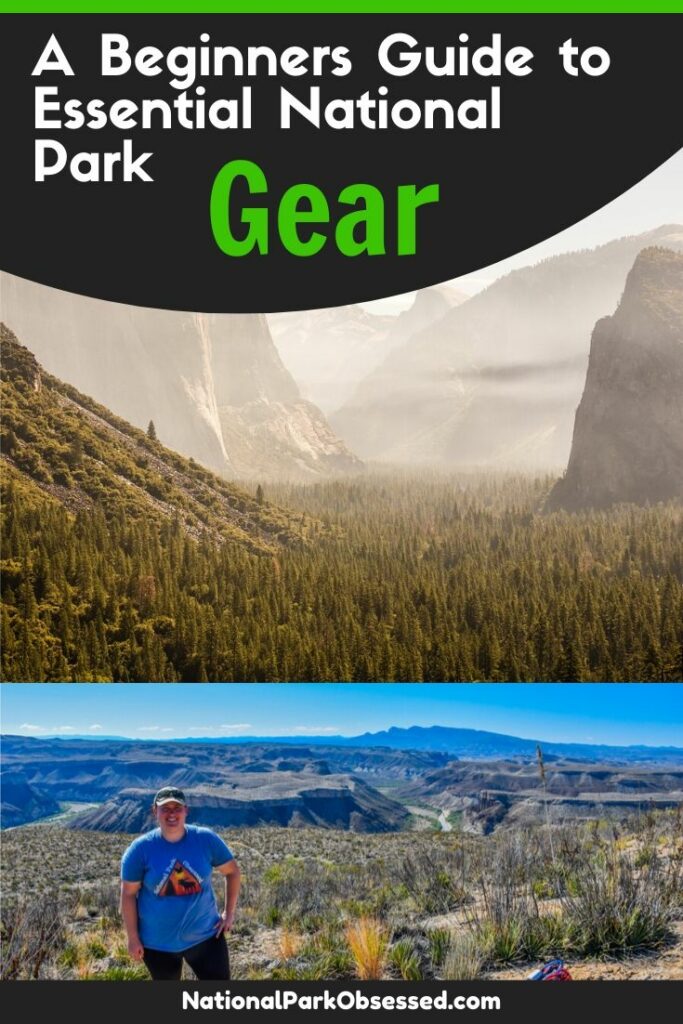
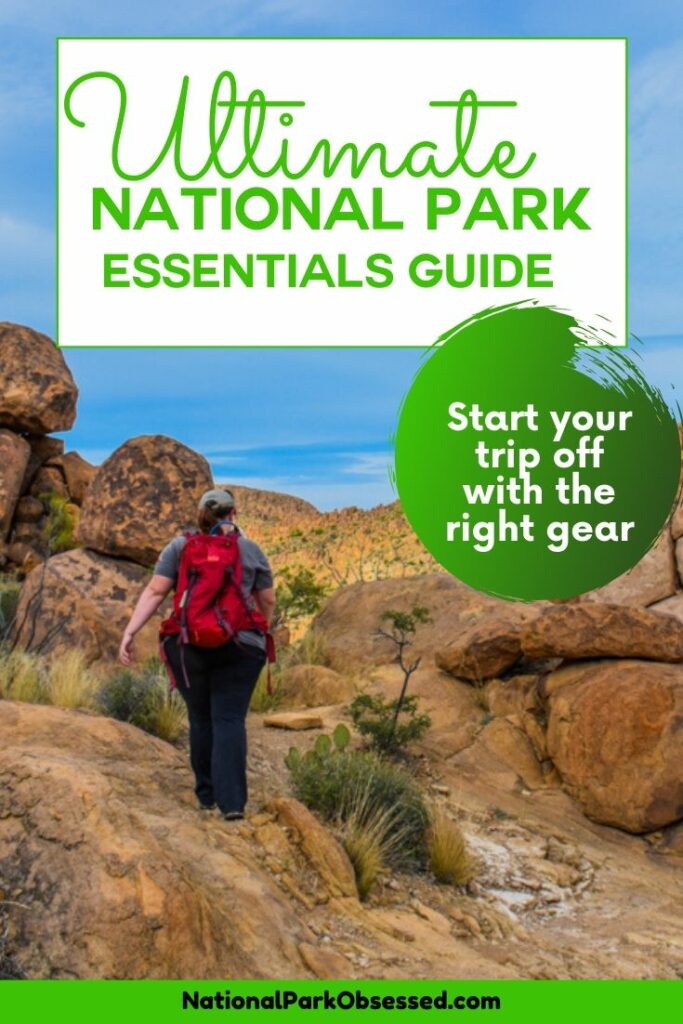
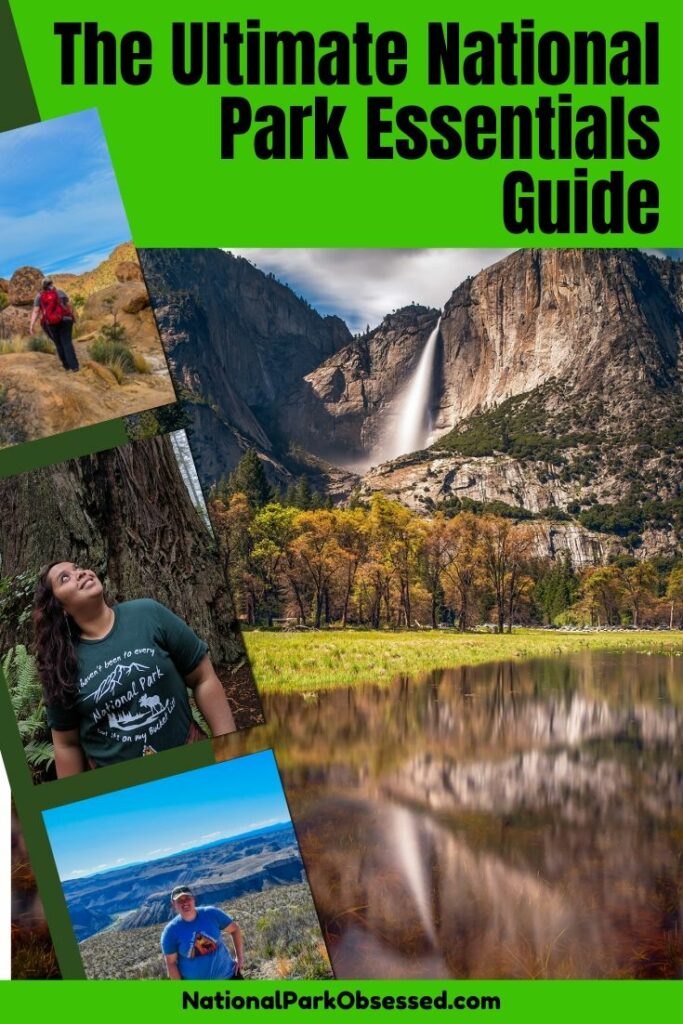
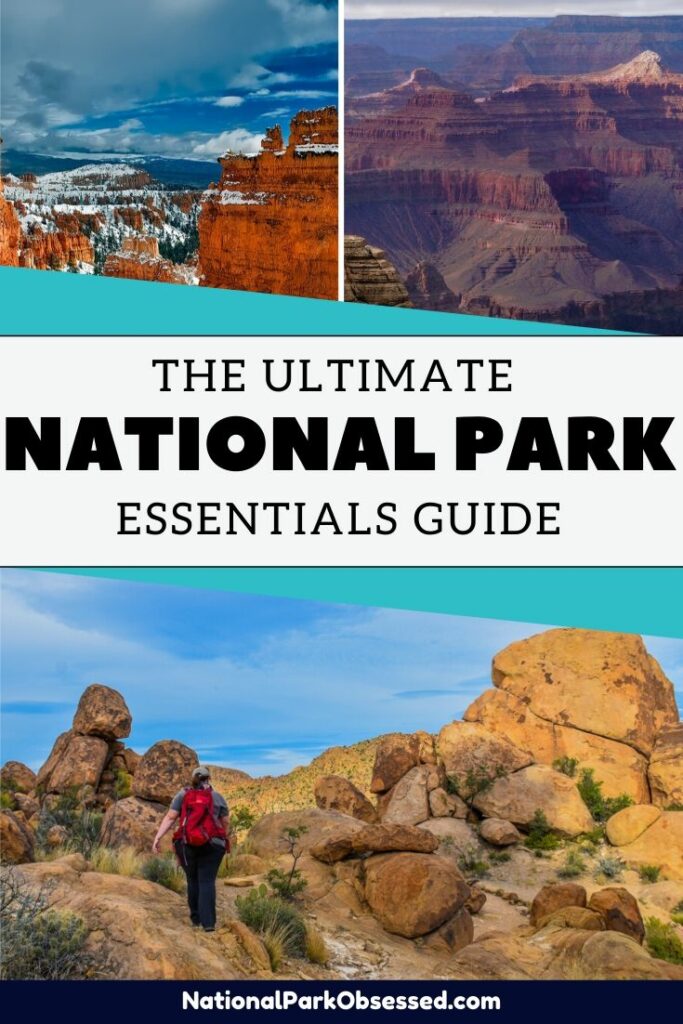
This post may contain affiliate links, meaning if you book or buy something through one of these links, I may earn a small commission at no extra cost to you! Read the full disclosure policy here
Are you new to exploring the national parks? Or are you just looking to a guide to ensure you don’t forget important items when packing for your National Park adventure, this is the post for you. This is the National Park Essentials Guide. This national park packing list will cover all the basics to get you started on your national park adventures.
It can be hard to figure out what gear you need. The 62 National Parks and 357 other National Park Service Units provide a vast network to explore. The parks run from the Arctic Circle to American Samoa to the deserts of California to the swamps of Florida to the mountains of Appalachia. The range of environments is diverse despite this there is a core set of gear that will be need to explore the parks.
Help support this site by purchasing one of our National Park Shirts, Poster, and other gear. Every purchase includes a donation to the national parks and helps keep National Park Obsessed’s website free to use and producing more national park guides.
Looking for more help planning your next adventure? Join the National Park Obsessed Facebook Group here to connect other national park lovers, trade advice, or see inspiring photos of the National Parks?
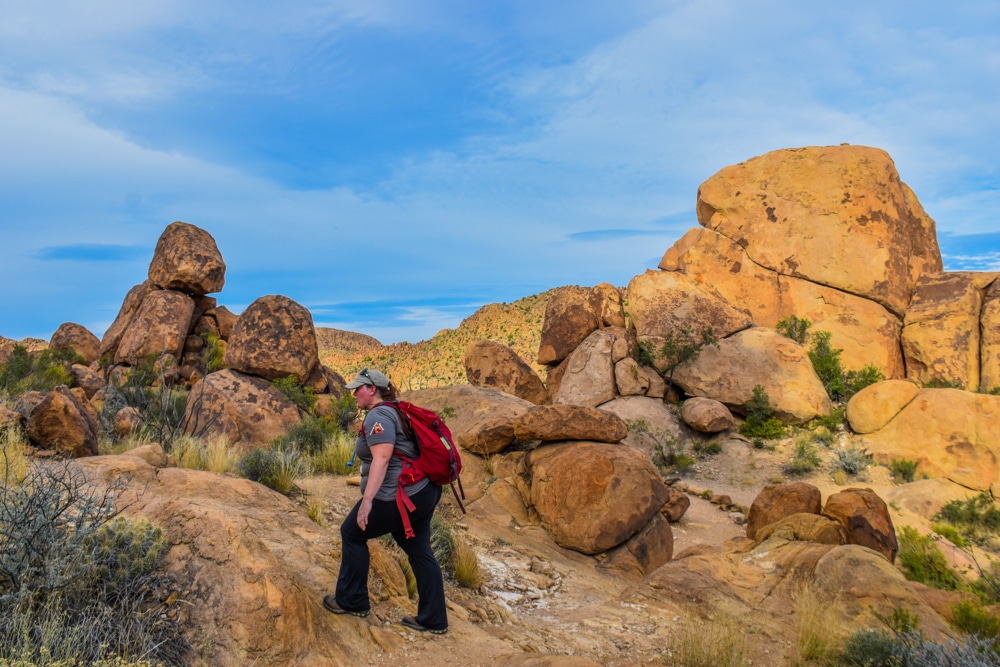
National Park Trip Planning and Home Essentials
- National Geographic Complete National Parks of the United States – This is the granddaddy of National Park books. It provides information on most of the 400+ Parks, Monuments, Battlefields, Historic Sites, Scenic Trails, Recreation Areas, and Seashores in the Untied States. The book is a great place to start planning your national park trips.
- National Geographic Atlas of the National Parks – National Geographic Atlas of the National Parks is a STUNNING coffee table book that every National Park lover needs. It is richly illustrated with maps, graphics, and photographs to help inspire you to plan your next national park adventure.
- Lonely Planet USA’s National Park (Travel Guide) – Lonely Planet offers an excellent guide book to exploring the national parks. This book was lasted updated in 2019 and has practical planning advice on what to see and when to visit each national park. This book covers the 61 national parks.
- National Park Scratch-Off Map – Track your National Park travels with a Scratch Your Travels® National Park Map. This 20×16 inch map allows you to scratch foil to reveal a hand-drawn image from each park. 5% of the profits from this map’s sales are donated to the National Parks.
- National Park Mug – Enjoy your morning cup of coffee or tea out of one of our National Park Mugs or Tumbler.
- National Park Obsessed Sticker – Share your love of the parks with a National Park Obsessed logo sticker. They make a great addition to water bottles, laptops, and cars.
Packing List For the National Parks Trips 2020
National Park Basics
- National Park Pass – The America the Beautiful Annual Pass is an all entrance pass to the 115 free charging National Park Service units plus over 2,000 other federal lands. The pass cost $80 and valid for one year plus the month purchased. The pass pays for itself in about 2 National Parks.
- National Park Passport – The National Park Passport Book is the cheapest and best souvenir of your national park adventures. This book makes it easy to collect the National Park Cancellation Stamps. The cancellation stamps have the date of your visit and make it easy to track when you visited each national park service unit.
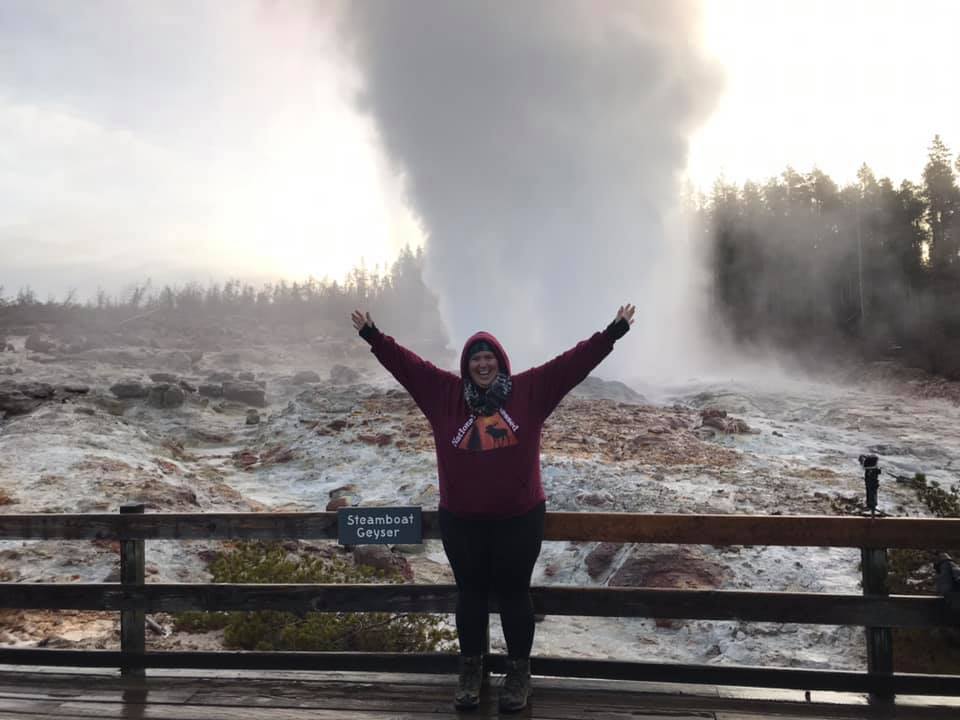
National Park Essentials List: Personal Items
- Refillable Water Bottles – Do your part to reduce litter in our parks by bringing a refillable water bottle with you. A reusable and refillable water bottle can save you a lot of money and really help the environment. Here are my favorite water bottles
- Water Storage – In some parks, there is no water once you leave the visitor center. It is recommended that you carry a gallon of water per person per day. Personally, I keep a 5.3-gallon folding water cube in my car for extra water. I keep it so I have extra water plus enough to help someone out if I come across someone in serious trouble. Be sure to cover the water cube with a towel or shirt when leaving it in the car. Sunlight reflecting through the container has the ability to start fires.
- Sunscreen – No matter the park, you should be using sunscreen. You don’t want to get burned on your visit. If you are visiting a national park and planning on going swimming please use a reef-friendly sunscreen (even in the alpine lakes). These sunscreens have a lower environmental impact on marine environments.
- Lip balm – Your lips need just as much sun protection as your skin does.
- Sunglasses – Similar to sunscreen, you need a good pair of polarized sunglasses to protect your eyes from the glare of the sun.
- First aid kit – As with any outdoor adventure, accidents happen. It is better to be prepared and have a compact first-aid kit ready to help with any accidents.
- Headlamp – Always keep a headlamp handy. You never know when you might want it. It can be used for midnight bathroom runs to sunrise/sunset hikes. A good headlamp makes it easy to operate in the dark.
- Bug Protection – More than one national park has a major bug problem. Usually, bug spray will take care of the problem but there are a few parks where you need more bug protection that bug spray. I have been to both Denali and Everglades National Parks during mosquito season. The hordes of mosquitos are like a blood-sucking mass that laughs in the face of bug spray. A head net can be a lifesaver in these parks.
- Personal Locator Beacon – A personal locator beacon can help you and your family feel safe on your adventures. This satellite communicator offers the ability to seen text messages or emergency alerts. These beacons can transmit your location to emergency services. Do keep in mind that knowing your location is half of the battle. It can take hours if not days for search and rescue to locate you. These devices have two costs. The first cost is the cost of the device and the second is the subscription service for sending and receiving messages. But the peace of mind can be worth the cost.
- Bear Spray – If you hiking in bear county, bear spray is an important safety device. On the unlikely event that you are attacked by a bear, this concentrated pepper spray can deter a charging bear and save your life. PLEASE NOTE – Bear spray is to be used on the bear NOT yourself.

National Park Photography Gear List
- Camera – There are a lot of great camera options for outdoor photographers. You will hear people debate the merits of Nikon, Sony, and Canon all day long and there are plenty of people who are die-hards of their brand. Your camera body is the cheap part of your camera. It is the lens that is going to be the major cost. The long and the short of it is Sony offers an amazing mirrorless camera but they are new to the game for the lens so the used market is tiny. Nikon and Canon have greatly improved their mirrorless options and have great full-frame cameras. Both Nikon and Canon have well established used lens markets so there are plenty of deals if you are willing to look. I personally use a Nikon D5500 with lens ranging from 18mm-140mm to an 800mm. I am using this because it was the brand my father used and I was able to borrow his big lens (500mm). I have stuck with the platform because of the lens. Otherwise, I would look into getting a Sony.
- Memory Cards – Extra memory cards are a must-have to ensure you never miss a moment while in a National Park.
- Memory Card Case – If you have several memory cards, getting a carrying case to keep your
- Tripod – A good quality tripod and help you take self-portraits and give you a steady holder for your national park photos.
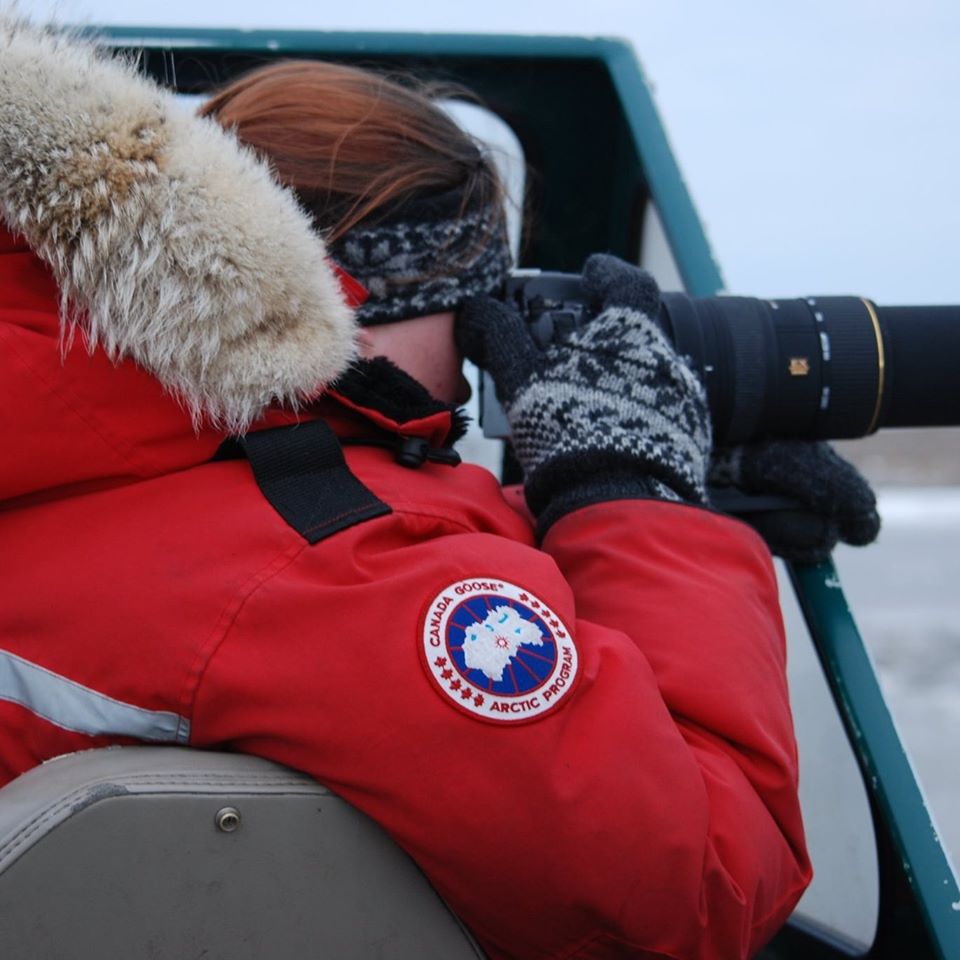
Essentials for National Park: Hiking
- Shoes – Shoes are probably the most important piece of gear to any hiker. Hiking shoes should be seen as an investment. On the trail, your feet are your transportation and a solid pair of hiking shoes help support your feet and can prevent injury. You should look for a brand that fits your feet and this can per a very personal thing. You will hear people who swear by Asolo, Merrell, KEEN, or 100 other brands. If it is sold by REI then it is a good quality pair of hiking shoes. Find your shoe brand and a good pair of hiking socks that work together to make the perfect fit and you will not get blisters. I spent 12 years hiking in Asolo boots because they had an amazing fit for MY feet (they recently changed their fit and no longer work for my feet so I am about 500 miles into my first pair of Salomon boots).
- Trail Navigation – Always carry a map and compass. They never run out of batteries and you can always figure out where you are. In many national parks, your cellphone is NOT adequate for navigation in the parks. Cell service is spotty and UNRELIABLE in many national parks and they can run out of batteries. A map and compass never have that problem.
- Hiking Day Pack – A good day pack is the best way to transport all your gear when hiking. I highly recommend getting a backpack that is designed for outdoor use. These packs come with handy pockets and straps. My 40 L day pack has a pocket for my water bladder and a clip to hold the water line in place.
- Hydration Bladder – If you are hiking longer distances, a hydration bladder is the best way to hike with significant quantities of water. It is a rare hike when I don’t bring a full bladder with me.
- Hat – Hats are another sun protection device. A hat can keep the sun off your face and neck and help minimize the need for sunscreen while on the trail.
- Trowel – On longer hikes, it many become necessary to go the bathroom while on the trail. It is good practice (and a kindness to other) to bury your waste and pack out your toilet paper. All waste should be buried in a small hole about 8 inches deep. A trowel makes digging this whole really easily.
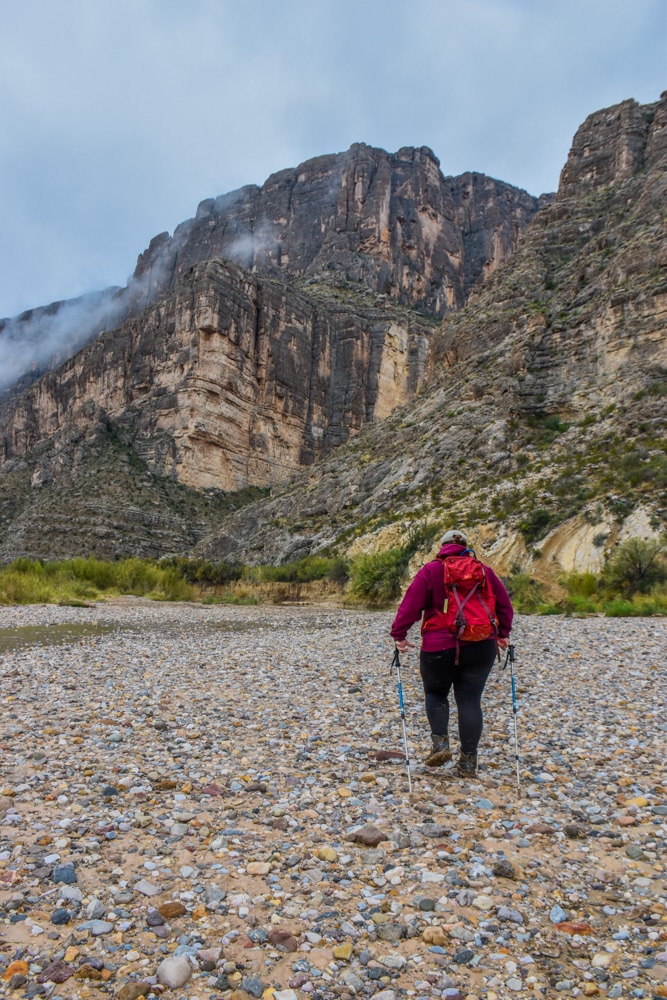
National Park Gear Checklist: Camping Gear
- Tent – This is your home away from home when camping. I prefer the lighter, more packable backpacking tents so I can use them while car camping but at the same time still backpack with them. I have both a one-man and a two-man tent.
- Sleeping Bag – Your sleeping bag is critical to getting a good night’s sleep. There are a wide ranges of options and picking a sleeping back requires you to know HOW you sleep. Do you sleep hot, do you sleep cold, do you like to be toasty warm? What temperatures are you expecting to have to sleep in? All sleeping bags come with a number rating. A sleeping bag with a 0 rating is rated designed to keep the average person comfortable at 0°F. 20 is rated for 20°F and so on. I always recommend getting a sleeping bag rated for below freezing. It isn’t uncommon for temperatures to fall below freezing in some parks (even during summer). I personally use a sleeping bag rated for 0 because I like to spring and fall camp.
- Sleeping Pad or Air Mattress – A sleeping pad goes under your sleeping bag to act as a softer barrier than sleeping on the bare ground. It provides an extra barrier and can help keep you warmer and more comfortable. I prefer a closed cell sleeping pad because you don’t have to worry about them leaking air in the middle of the night.
- Cooler – When you are car camping, a cooler is a perfect addition and a great way to expand your cooking options. A quality cooler will keep food colder with less ice.
- Stove – I prefer to cook over my camping stove rather than a campfire. Campfires can be a lot of work and the temperatures can be hard to maintain. My camping stove is a quick and easy way to make meals while camping.
- Camp Cookware – If you are planning on cooking while camping, you need to bring some cookware with you.
- Camp Kitchen Set – A kitchen set give you all the tools you need to make some really delicious camp meals.
- Dish Soap – Some soaps are better for the environment than others. While camping it is particularly important to use an environmentally-friendly biodegradable soap.
- Lantern – A small solar powered lantern is a great way to provide a little bit of light at night in your campground.
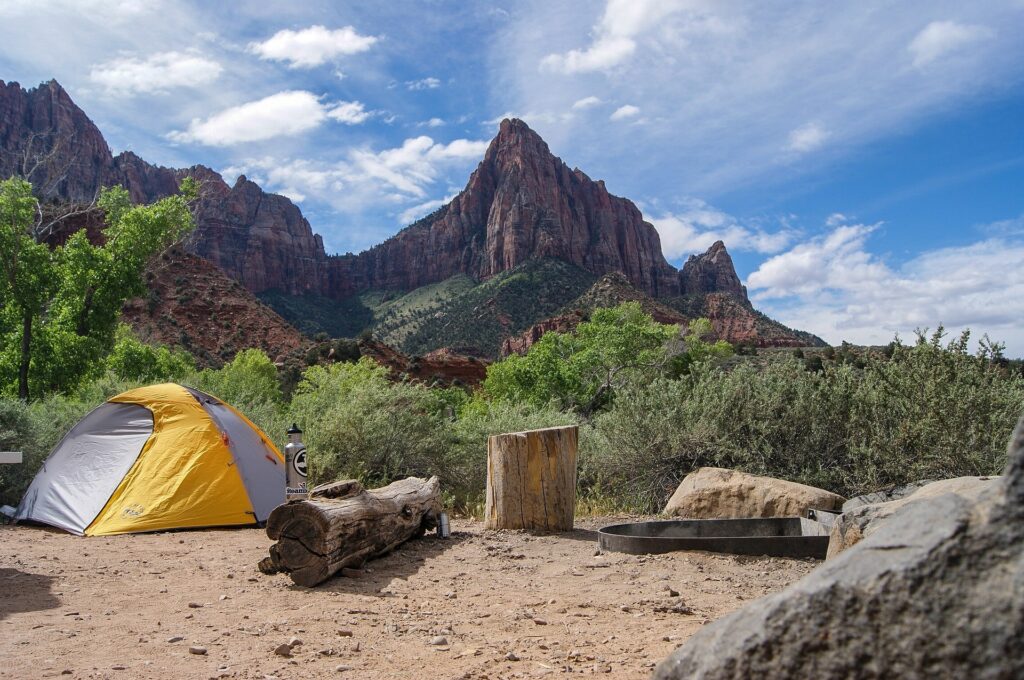
National Park Necessities: Clothing
- National Park Obsessed Shirt – Share your love of the National Parks and support National Park Obsessed with a National Park Obsessed T-Shirt.
National Park Supplies: Other Items
- Folding Chair – A light weight folding chair can provide a comfortable seat anywhere. They are easy to pack and don’t take up a lot of room.
- Power Bank – Electricity is at a premium in the national parks. If you are using your phones to take pictures while in the parks, you will want to carry a power bank so you can recharge on the go. I use a solar power bank so I can charge it in the backcountry and in my campsite.
- Car Power Inverter Outlet – A car power inverter outlet can allows you to charge electronics while in the car. I use a inverter rather than a USB plug so I can charge things like my laptop and my USB powered devices.
Other National Park Gear Guides
Get your National Park Obsessed Gear and Help Support the Parks
[go_pricing id=”end_of_post”]

Jennifer Melroy
Hi, I'm Jennifer!
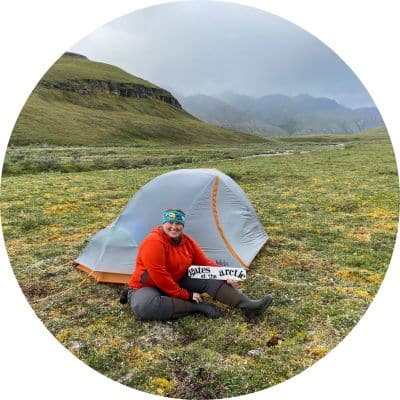
Welcome to the wonderful world of National Parks. I'm here to help you plan your NEXT amazing adventure through the United States National Parks and beyond. I want the national parks to be accessible to all.
I live in Tennessee, and when I'm home, you can find me hiking in the Smokies and the Cumberland Plateau.
58/63 National Parks
250+/423 National Park Units
Want to know more? Start Here.
ACKNOWLEDGEMENT OF LAND
On this site, we promote travel to the United States and beyond that are the traditional lands of Indigenous and First Nations peoples.
With respect, I make a formal land acknowledgment, extending my appreciation and respect to these lands’ past and present people.
To learn more about the people who call these lands home, I invite you to explore Native Land.
DISCLAIMER
National Park Obsessed assumes no responsibility or liability for any errors or omissions in the content of this site (NationalParkObsessed.com). The information contained in this site is provided with no guarantees of completeness, accuracy, usefulness or timeliness. You are encouraged to conduct your own due diligence before acting on the information provided on this site and should not rely on the opinions expressed here.
There is an inherent risk in all outdoor recreation activities, the reader assumes all responsibility for their own personal safety.
DISCLOSURE
We are a participant in the Amazon Services LLC Associates Program, an affiliate program designed to provide a means for us to earn fees by linking to Amazon.com and affiliated sites.
Privacy Policy • About Us • Contact
Select stock photography provided depositphotos
Copyright ©2023 National Park Obsessed, LLC
Privacy Overview
Last Updated on 5 Feb 2021 by Jennifer Melroy
